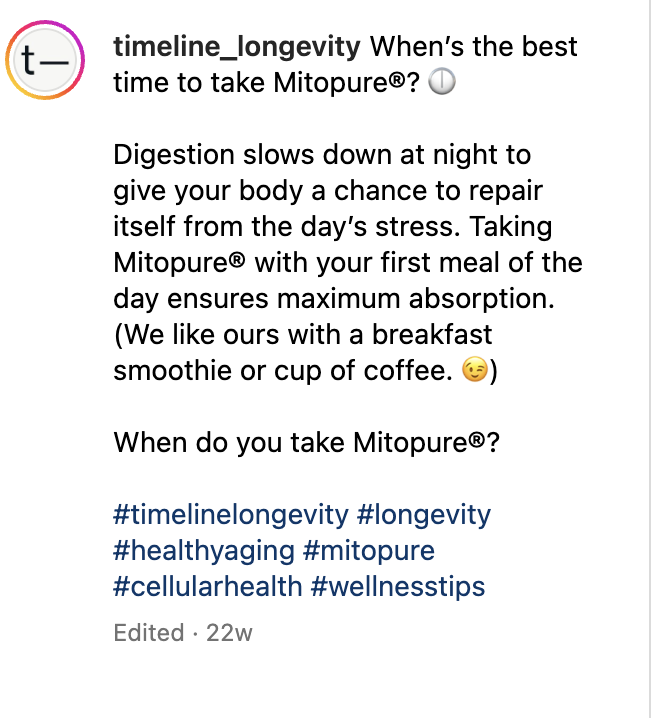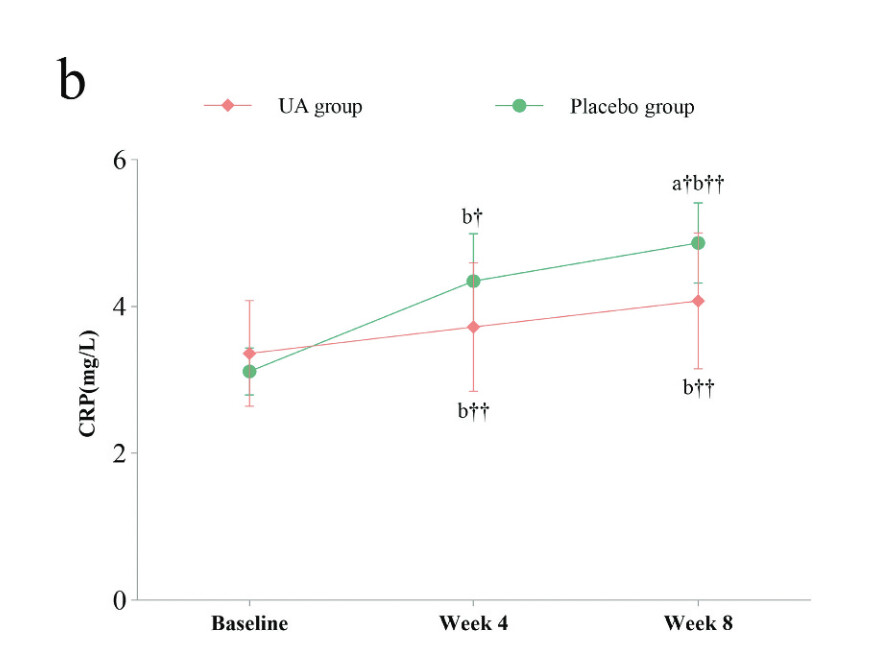I dug more on UA. Here are some interesting 2024 papers, not of the highest quality though:
- Chinese preprint on mice: Urolithin A improves motor dysfunction induced by copper exposure in SOD1 G93A transgenic mice via activation of mitophagy 2024: “Cu-exposure worsened motor function, promoted muscle fibrosis, loss of motor neurons, and astrocyte and microglial activation. It also induced abnormal changes in mitochondria-related biological processes, leading to a significant reduction in ATP levels and an increase in MDA levels. Upregulation of P62 and downregulation of Parkin, PINK1, and LAMP1 were revealed in SOD1G93A mice with Cu exposure. Administration of UA activated mitophagy, modulated mitochondria dysfunction, reduced neuroinflammation, and improved gastrocnemius muscle atrophy and motor dysfunction in SOD1G93A mice with Cu exposure. Mitophagy plays critical role in ALS exacerbated by Cu exposure. UA administration may be a promising treatment strategy for ALS.”
- Japanese paper, on mice: Urolithin A-mediated augmentation of intestinal barrier function through elevated secretory mucin synthesis 2024: “We found that Uro A thickened murine colonic mucus via enhanced mucin 2 expression facilitated by Nrf2 and AhR signaling without altering tight junctions. Uro A reduced mucosal permeability in fluorescein isothiocyanate-dextran experiments and alleviated dextran sulfate sodium-induced colitis. Uro A treatment increased short-chain fatty acid-producing bacteria and propionic acid concentration. LS174T cell studies confirmed that Uro A promotes mucus production through the AhR and Nrf2 pathways. In conclusion, the enhanced intestinal mucus secretion induced by Uro A is mediated through the actions of Nrf-2 and AhR, which help maintain intestinal barrier function.” (@Joseph_Lavelle @DrFraser for gut health?)
- Chinese paper, on mice: Urolithin A Ameliorates Athletic Ability and Intestinal Microbiota in Sleep Deprivation from the Perspective of the Gut-Muscle Axis 2024: “UA is gavaged to C57BL/6 mice (50 mg kg−1 bw) before 48-h SD. The results indicate that pretreatment of UA significantly enhances motor ability and energy metabolism. The inflammation is suppressed, and intestinal permeability is improved after prophylactic treatment with UA. The decreased level of serum lipopolysaccharide (LPS) is concomitant with augmentation of the intestinal tight junction proteins. 16s rRNA analysis of colonic contents reveals that UA significantly reduces the abundance of Clostridia_UCG-014 and Candidatus_Saccharimonas, and upregulates Lactobacillus and Muribaculaceae. UA probably influences on gut microbial functions via several energy metabolism pathways, such as carbon metabolism, phosphotransferase system (PTS), and ATP binding cassette (ABC) transporters.”
- German-Swiss RCT by the Mitopure team, 1,000 mg UA/day: Impact of urolithin A supplementation, a mitophagy activator on mitochondrial health of immune cells (MitoIMMUNE): A randomized, double-blind, placebo-controlled trial in healthy adults. 2024: “Intake of UA was safe and well-tolerated in the intervention cohort of 25 participants. After the study period, total peripheral lymphocytes and circulating NK cells were expanded in the UA group. Performing a complete immunophenotyping via spectral flow cytometry, we found that UA elicits immune remodeling characterized by broad changes of immune surface markers and mitochondrial measurements. CD8+ cells of participants in the intervention arm displayed greater mitochondrial mass, while preferably taking on a naive phenotype and expressing more Ki67. In addition, circulating monocytes exhibited a less inflammatory signature. UA intake reduced plasma levels of several proinflammatory cytokines. […] Collectively, our study constitutes an unprecedented intervention-based assessment of immune aging that globally characterizes the effect of UA on the immune system, proposing validation in future confirmatory studies and potential combination with cancer immunotherapy.” (@Neo wdyt?)
- Small (n=10) short (10 weeks) Iranian RCT, 1,000 mg/day: Evaluation of Urolithin A Efficacy in Heart Failure Patients with Reduced Ejection Fraction: A Randomized, Double-blind, Crossover, Placebo-controlled Clinical Trial 2024: “All patients completed the study. The results failed to reveal any significant effect of UA supplementation on echocardiographic measures (LVEF, LVEDD, LVESV, and TAPSE). Plasma concentrations of pro-BNP, glucose, and CRP (p >0.05) were also not altered. Serum HDL-C levels were increased with UA compared with placebo (+6.46 ± 2.33 mg/dL, p =0.026), whereas other lipid indices (LDL-C, triglycerides, total cholesterol, and VLDL-C) remained unchanged (p >0.05).” => At least it’s safe?

- Chinese paper, on mice: Methylated urolithin A, mitigates cognitive impairment by inhibiting NLRP3 inflammasome and ameliorating mitochondrial dysfunction in aging mice 2024: “Our study used an in vivo aging model induced by d-galactose (D-gal) to show that mUro A notably improved learning and memory, prevented synaptic impairments by enhancing synaptic protein expression and increasing EPSCs, and reduced oxidative damage in aging mice. mUro A alleviated the activation of the NOD-like receptor thermal protein domain-associated protein 3 (NLRP3) inflammasome, leading to reduced glial cell activity and neuroinflammation in both accelerated aging and naturally senescent mouse models. Moreover, mUroA enhanced the activity of TCA cycle enzymes (PDH, CS, and OGDH), decreased 8-OHdG levels, and raised ATP and NAD+ levels within the mitochondria. At the molecular level, mUro A decreased phosphorylated p53 levels and increased the expression of peroxisome proliferator-activated receptor γ coactivator 1α (PGC-1α), thus enhancing mitochondrial function. In conclusion, mUro A alleviates cognitive impairment in aging mice by suppressing neuroinflammation through NLRP3 inflammasome inhibition and restoring mitochondrial function via the p53-PGC-1α pathway. This suggests its potential therapeutic agent for brain aging and aging-related diseases.”
The Mitopure RCT looks quite good to me. It seems to confirm the Chinese studies on rodents (see also those: Urolithin A (UA) One of 4 Promising Agents 2024 by Brian Kennedy of NSU - #220 by sml491010 ).

